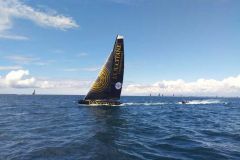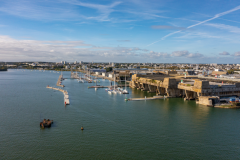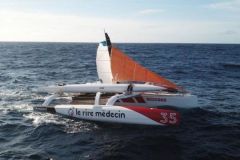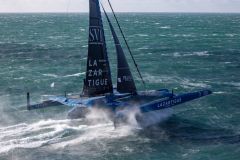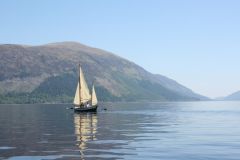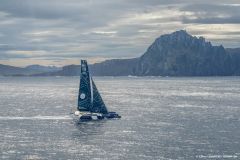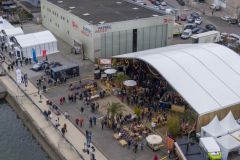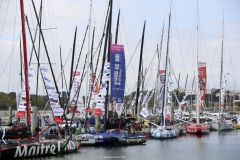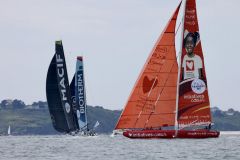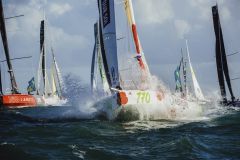Arrived at the Doldrums, about halfway through the race between Le Havre and Itajaí (Brazil), the fleet of the Transat Jacques Vabre was considerably reduced. Many boats had to make a pit stop.
If we look at the figures, almost 50% of the boats have now left the race. All categories are affected except the Class 40 which shows its good resistance to the difficult sea conditions.
This situation is partly explained by the weather at the start of the race, which was particularly tricky, offering the skippers three successive lows to negotiate. With winds of more than 30 knots and heavy seas, the equipment and the men were put to the test.
Class 40 âeuros Only 3 dropouts
Apart from Team Consise which encountered structural problems following the passage in a wave (boat cracked at the level of structural partitions), the withdrawals of the two other class 40 are due to problems of pilot (Bretagne-Crédit Mutuel Elite) or energy (engine failure on Eärendil). For the rest of the fleet (11 boats) the race continues remarkably led by Le Conservateur.
Multi 50 âeuros A lack of luck

There were 4 multi 50s at the start, but only 2.5 are still racing. Indeed, the French Tech Rennes Saint-Malo with Yvan Bourgnon on board has met a container. The impact damaged the 2 floats of the trimaran.

Note that Ciela Village stopped in Cape Verde to repair the front of the central hull, whose gennaker tack was torn off, taking away the front balcony and leaving a gaping hole in the deck. A repair that should take more than 24 hours and that cost him the first place!
Ultimate - 2 of 4

Prince de Bretagne was the first boat to abandon the race after capsizing off Spain. Although the two crew members were quickly airlifted, the boat is currently being towed to Lorient. Lionel Lemonchoix and his team preferred to tow her backwards after securing the platform.


Actual was also forced to retire due to rigging problems. The bolt of the shroud which allows to tilt the mast broke. The crew having succeeded in saving the mast, the boat is now back to its home port of La Trinité sur Mer.

Imoca âeuros 11 of 20
It is the Imoca class that is the most talked about with more than half of the competitors having to abandon. What is going on with these boats, which were designed to sail around the world (Vendée Globe) in the most difficult seas on the globe? Are they not strong enough?
In view of the damage, one could be tempted to conclude so quickly. Indeed, among the 6 new boats launched before the race, 4 have already been forced to retire, 3 of them for structural problemsâeuros¦ Thus Hugo Boss, Safran and StMichel Virbac have seen their hulls fall apart in the forward section or near the foils. An area that will have to be looked at closely before starting a new race. It is likely that Banque Populaire VIII, currently in the leading trio, will be watching this area very closely. Indeed, this boat is built in the same mold as Safranâeuros¦

For the other competitors, it was rather rigging and sail problems that forced them to stop. Spirit of Hungary dismasted and Maître Coq narrowly avoided losing its mast due to a problem with a forestay. Edmond de Rotschild and Adopteunskipper.net also had shroud problems. Finally, the mainsail of Bateau des Métiers by Aerocampus broke open. Bastide Otio also had sail problems and finally on O Canada, the mainsail track tore off the mast. Only SMA has a keel fairing that was torn off, probably following an encounter with a floating object. All these "little" problems do not call into question the structure of the boat.

The Transat Jacques Vabre has certainly encountered difficult conditions, but we are in a mechanical sport where breakage is an integral part of the project.









